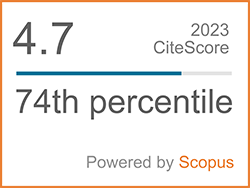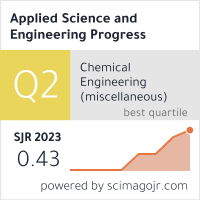A Decision Support System for Consumer Behavior of Chinese In-bound Tourists on Functional Beverage: An Empirical Study during COVID-19 with Thailand Sandbox
Abstract
Keywords
[1] World Trade Organization, “Trade set to plunge as COVID-19 pandemic upends global economy,” 2020. [Online]. Available: https://www.wto.org/ english/newse/pres20e/pr855_e.htm
[2] N. Donthu and A. Gustafsson, “Effects of COVID-19 on business and research,” Journal of Business Research, vol. 117, no. 284–289, Sep. 2020.
[3] J. Ofori and Y. Peggy, “Novel technologies for the production of functional foods,” in Bionanotechnology: A Revolution in Food, Biomedical and Health Sciences. Chichester, UK: John Wiley & Sons, 2013.
[4] N. Childs, “Functional foods and the food industry: Consumer, economic and product development issues,” Journal of Nutraceuticals, Functional and Medical Foods, vol. 1, no. 2, pp. 25–43, Jul. 2015.
[5] J. Bogue, T. Coleman, and D. Sorenson, “Determinants of consumers’ dietary behaviour for health-enhancing foods,” British Food Journal, vol. 107, no.1, pp. 4–16, Jan. 2005.
[6] A. Kengpol and W. Wangkananon, “A framework to assess customer satisfaction for functional beverage flavour notes using a decision support methodology,” presented at the 23rd International Conference on Production Research (ICPR 2015), Manila, Philippines, Jul. 30–Aug. 3, 2015.
[7] A. Ounsri, P. Tabkosai, A. Kengpol, and S. Tuammee, “Design of a decision support system for functional beverage flavoring,” Applied Science and Engineering Progress, vol. 13, no. 2, pp. 112–117, 2020, doi: 10.14416/j. ijast.2018.12.006.
[8] A. Kengpol, J. Klunngien, and S. Tuammee, “Development of a decision support framework for health beverage flavouring for the ageing society using artificial neural network,” International Journal of Computer Theory and Engineering, vol. 10, no. 6, pp. 194–200, Dec. 2018.
[9] ThaiWebsites. “Tourism Statistics Thailand 2000–2021,” 2021. [Online]. Available: https:// www.thaiwebsites.com/tourism.asp
[10] P. Kotler and G. Armstrong, Principles of Marketing. 16th ed., Essex, UK: Pearson Education Limited, 2016.
[11] M. Siegrist, N. Stampfli, and H. Kastenholz, “Consumers' willingness to buy functional foods. The influence of carrier, benefit and trust,” Appetite, vol. 51, no. 3, pp. 526–529, Nov. 2008.
[12] N. Isa, N Salleh, and A. Aziz, “Determinants and impact of online social interaction on online buying behaviour,” Procedia - Social and Behavioral Sciences, vol. 219, pp. 352–358, May 2016.
[13] B. Chua, H. Kim, S. Lee, and H. Han, “The role of brand personality, self-congruity, and sensory experience in elucidation sky lounge users’ behaviour,” Journal of Travel & Tourism Marketing, vol. 36, no. 3, pp. 1–14, Jul. 2018.
[14] N. Rubio, J. Oubiña, and N. Villaseñor, “Brand awareness–Brand quality inference and consumer’s risk perception in store brands of food products,” Food Quality and Preference, vol. 32, pp. 289–298, Mar. 2014.
[15] A. Feil. C. Cyrne, F. Sindelar, J. Barden, and M. Dalmoro, “Profiles of sustainable food consumption: Consumer behavior toward organic food in southern region of Brazil,” Journal of Cleaner Production, vol. 258, p. 120690, Jun. 2020.
[16] Y. Kim and H. Lee, “Motivation and reuse: How does motivation affect sustainable use intention for brand webtoons?” Sustainability, vol. 13, no. 4, p. 1620, Feb. 2021.
[17] J. Singh, L. Quamina, and T. Xue, “Ten million followers and counting: How digital brand alliances between online influencers and brands impact consumer value: An abstract perceptions,” in Proceedings of the Academy of Marketing Science Conference of 2017 (AMSAC 2017), 2017, pp. 24– 26.
[18] W. Efanny, J. Haryanto, M. Kashif, and H. Widyanto, “The relationship between marketing mix and retailer-perceived brand equity,” IMP Journal, vol. 12, no. 1, pp. 192–208, Mar. 2018.
[19] A. Nayeem, S. Raja, and R. Shojib, “The impact of marketing mix in fascinating customers perception: Case study on online banks in Bangladesh,” IEEE-SEM, vol. 8, no. 1, pp. 231–241, Jan. 2020.
[20] T. Müller, F. Schuberth, and J. Henseler, “PLS path modeling – A confirmatory approach to study tourism technology and tourist behaviour,” Journal of Hospitality and Tourism Technology, vol. 9, no. 3, pp. 249–266, Dec. 2018.
[21] L. Sie, K. Phelan, and S. Pegg, “The interrelationships between self-determined motivations, memorable experiences and overall satisfaction: A case of older Australian educational tourists,” Journal of Hospitality and Tourism Technology, vol. 9, no. 3, pp. 354–379, Dec. 2018.
[22] W. Wang, “The influence of perceived technological congruence of smartphone application and air travel experience on consumers’ attitudes toward price change and adoption,” Journal of Hospitality and Tourism Technology, vol. 10, no. 2, pp. 122–135, Jun. 2019.
[23] R. Pereira, “Factors influencing consumer perceptions of Web‐based decision support systems,” Logistics Information Management, vol. 12, no. 1/2, pp. 157–181, Feb. 1999.
[24] A. Massari, F. Manca, and F. Girone, “Multiple correspondence analysis for customer segmentation in large retail groups,” Electronic Journal of Applied Statistical Analysis, vol. 9, no. 4, pp. 637– 654, Dec. 2016.
[25] Bordbia, “Future of adult beverages report,” 2020. [Online]. Available : https://www.bordbia. ie/globalassets/bordbia202 0/industry/insights/ consumer-insights/future-of- adult-be veragesreport- may-2020.pdf
[26] Mintel, “Global food and drink trends 2030,” 2020. [Online]. Available:https://www.mintel. com/global-food-and-drink-trends
[27] T. Pinto and A. Vilela, “Healthy drinks with lovely colors: phenolic compounds as constituents of functional beverages,” Beverages, vol. 7, no. 12, pp. 1–21, Feb. 2021.
[28] H. Chang, C. Ma, and H. Chen, “ The impacts of young consumers’ health values on functional beverages purchase intentions,” International Journal of Environmental Research and Public Health, vol. 17, no. 3479, pp. 1–12, May 2020.
[29] M. Rodrigues, J. de Paula Matos, and P. Horta, “The COVID-19 pandemic and its implications for the food information environment in Brazil,” Public Health Nutrition, vol. 24, no. 2, pp. 321–326, Nov. 2020.
[30] S. Tireki, “A review on packed non-alcoholic beverages: Ingredients, production, trends and future opportunities for functional product development,” Trends in Food Science & Technology, vol. 112, pp. 442–454, Apr. 2021.
[31] H. Gatignon, “Confirmatory factor analysis,” in Statistical Analysis of Management Data. Berlin, Germany: Springer, 2010, pp. 59–122.
[32] A. Saltelli, M. Ratto, T. Andres, F. Campolongo, J. Cariboni, D. Gatelli, M. Saisana, and S. Tarantola, Global Sensitivity Analysis: The Primer. West Sussex, England: John Wiley & Sons Ltd., 2008.
[33] Reportlinker, “Functional Beverages Global Market Report 2021: COVID 19 Growth And Change to 2030,” 2021. [Online]. Available:www.reportlinker.com/p06070251/?u tm_source=GNW
[34] K. Lalou, “Kerry flags opportunities for body-mind wellness NPD as COVID-19 propels demand for functional beverages,” 2021. [Online]. Available: www.foodingredientsfirst.com/news/ kerryflags- opportunities-for-body-mind-wellness-npdas- covid-19-propels-demand-for- functionalbeverages. html
DOI: 10.14416/j.asep.2021.09.001
Refbacks
- There are currently no refbacks.









